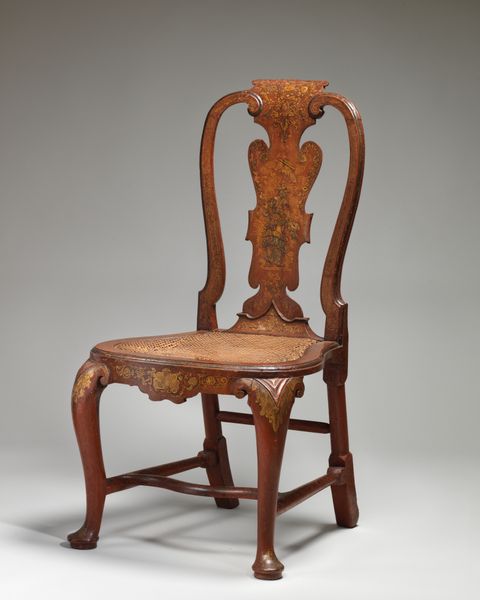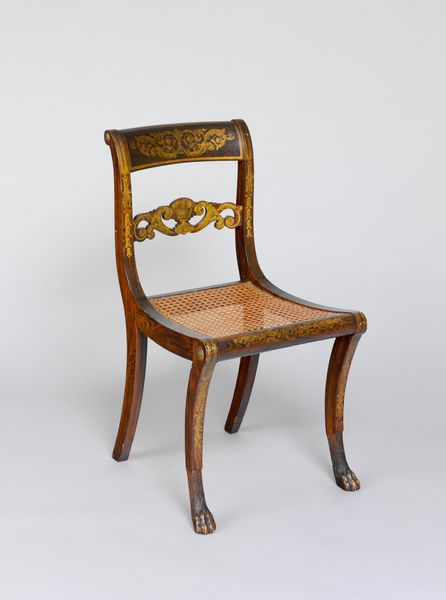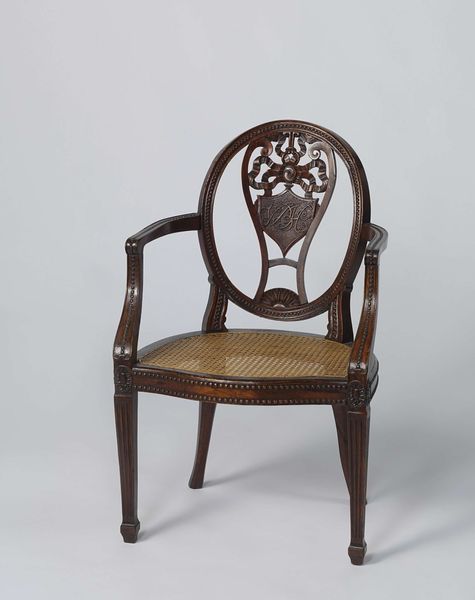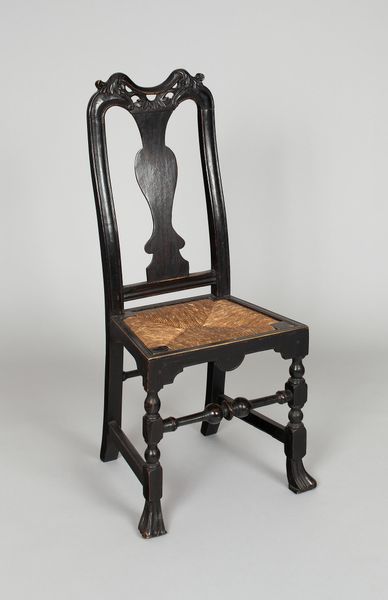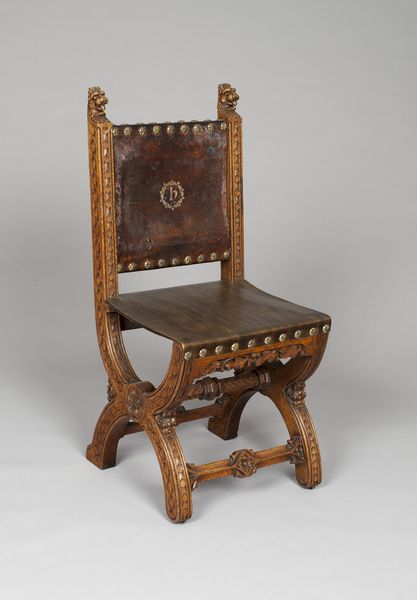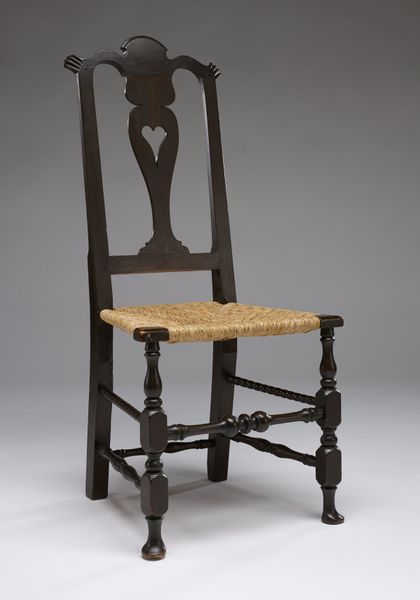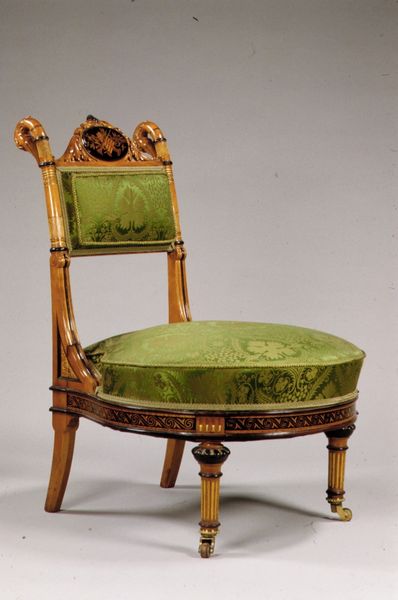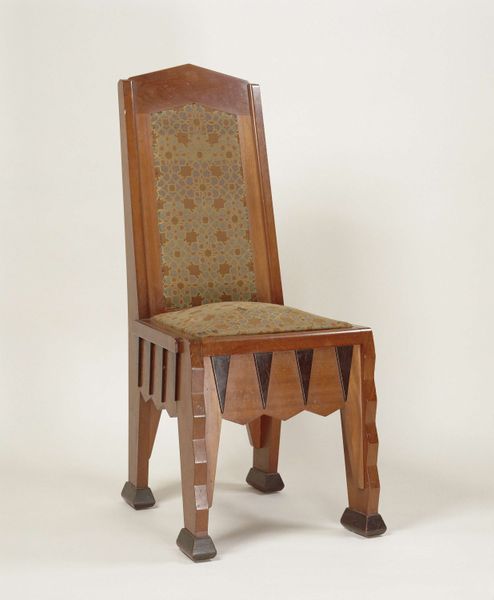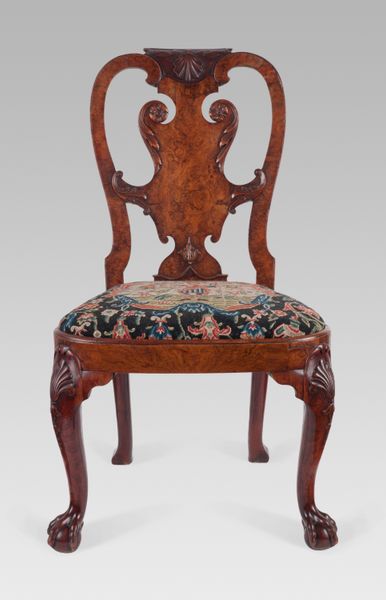
Dimensions: 40 x 21 1/2 x 21 in. (101.6 x 54.61 x 53.34 cm)
Copyright: Public Domain
This japanned side chair, made by an anonymous artist, now lives at the Minneapolis Institute of Art. When I look at it, I am struck by the way the black paint is lovingly applied and then worn away, revealing the wood beneath. It’s like seeing the chair age, its story etched into the surface. The gold floral designs painted on the chair seem to dance across the black background, each brushstroke a deliberate act of beautification. The paint isn't thick, but it's carefully placed to catch the light. I imagine the artist deciding where each stroke should go, building up layer upon layer of pattern that adds a sense of ornate beauty. It reminds me a little of Gustav Klimt, the way he layers patterns and textures to create these shimmering surfaces. This chair, though, feels more down-to-earth, more practical. It's a piece of furniture, not just a work of art, and that gives it a certain charm. I love how art can be both beautiful and useful, how it can elevate the everyday.
Comments
With its finely carved shell and carved (rather than lathe-turned) stiles, this chair would have been labor-intensive and hence, was most likely made for a wealthy household. It is not surprising therefore, that this chair was once owned by Levi Lincoln, a prominent statesman who served as Governor of Massachusetts from 1808-1809. His descendent, Mrs. Huntington Brown, brought the chair with her to Minneapolis in the early 20th century. Rounded stiles are found on classical Chinese furniture (see the Ming dynasty armchairs on view in Gallery 218), which indicates the owner's taste for the "oriental." Nearly one hundred years after this chair was made, a later owner had its original wood finish enhanced with "japanned" decoration, so named for its resemblance to Japanese lacquer.
Join the conversation
Join millions of artists and users on Artera today and experience the ultimate creative platform.

